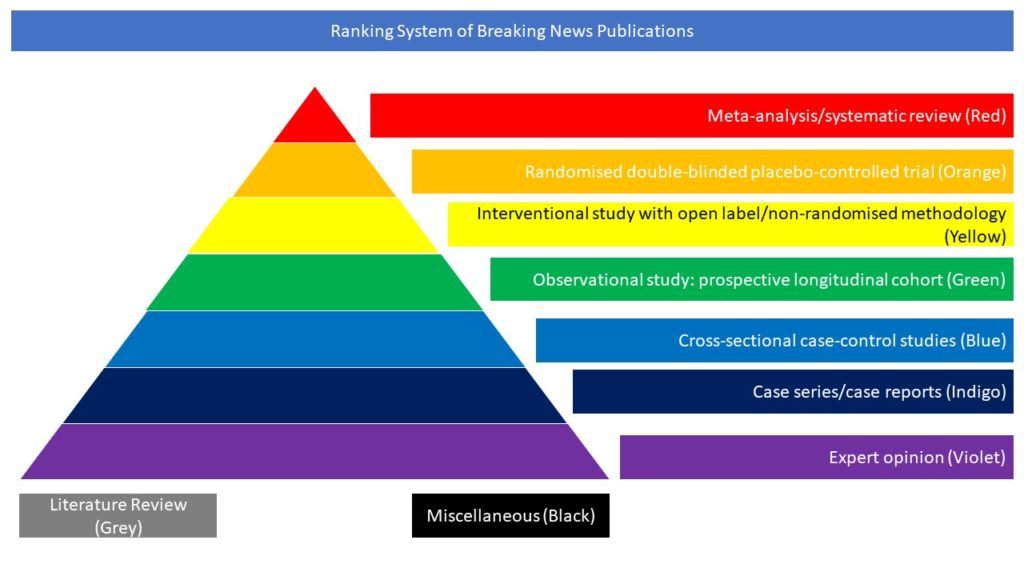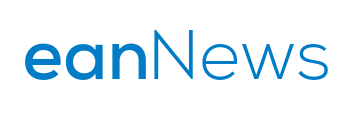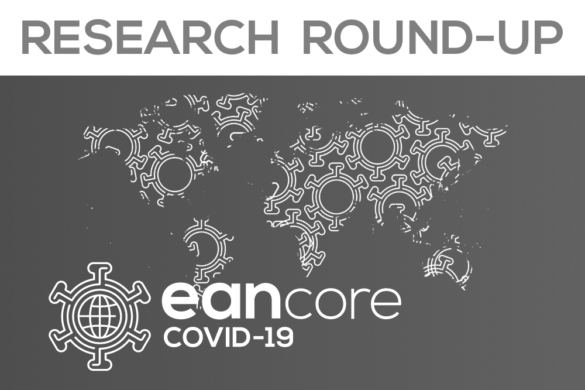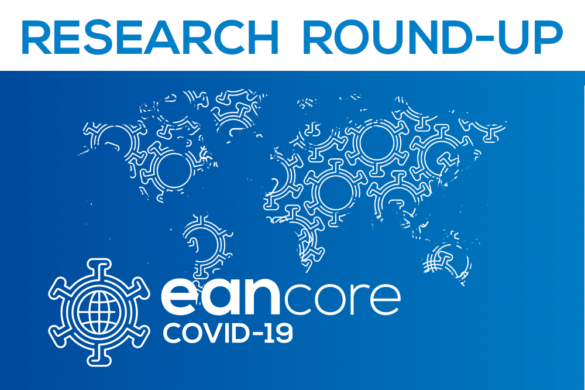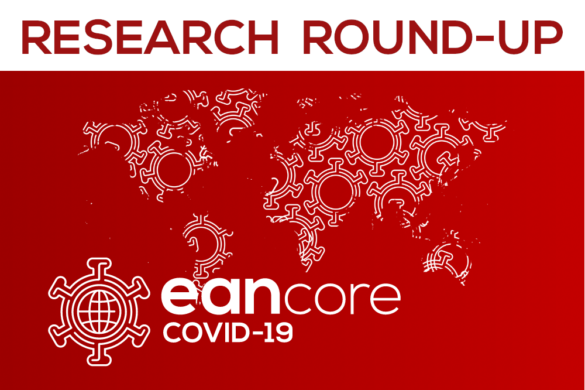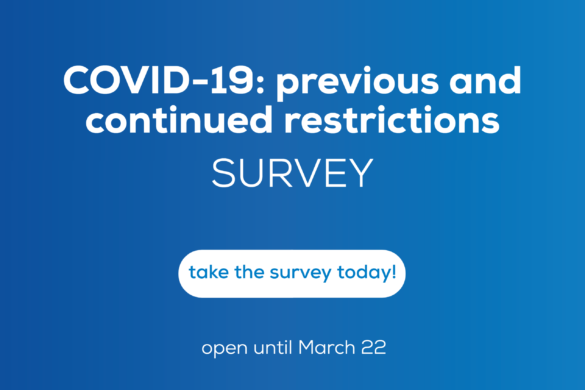Randomised double-blinded placebo-controlled trials (Orange)
Read on for our highlighted selection of Covid-related randomised double-blinded placebo-controlled trials from the scientific press for January 2022:
- Early Remdesivir to Prevent Progression to Severe COVID-19 in Outpatients
- Molnupiravir for Oral Treatment of COVID-19 in Nonhospitalized Patients
- Subcutaneous REGEN-COV Antibody Combination to Prevent COVID-19
- Efficacy and Safety of NVX-CoV2373 in Adults in the United States and Mexico
- Final efficacy analysis, interim safety analysis, and immunogenicity of a single dose of recombinant novel coronavirus vaccine (adenovirus type 5 vector) in adults 18 years and older: an international, multicentre, randomised, double-blinded, placebo-controlled phase 3 trial
- Immunogenicity and safety of a third dose of CoronaVac, and immune persistence of a two-dose schedule, in healthy adults: interim results from two single-centre, double-blind, randomised, placebo-controlled phase 2 clinical trials
- Immunogenicity, safety, and reactogenicity of heterologous COVID-19 primary vaccination incorporating mRNA, viral-vector, and protein-adjuvant vaccines in the UK (Com-COV2): a single-blind, randomised, phase 2, non-inferiority trial
- Safety and immunogenicity of seven COVID-19 vaccines as a third dose (booster) following two doses of ChAdOx1 nCov-19 or BNT162b2 in the UK (COV-BOOST): a blinded, multicentre, randomised, controlled, phase 2 trial
Early Remdesivir to Prevent Progression to Severe COVID-19 in Outpatients
Remdesivir improves clinical outcomes in patients hospitalized with moderate-to-severe coronavirus disease 2019 (COVID-19). Whether the use of remdesivir in symptomatic, nonhospitalized patients with COVID-19 who are at high risk for disease progression prevents hospitalization is uncertain. This randomized, double-blind, placebo-controlled trial involved nonhospitalized patients with COVID-19 who had symptom onset within the previous 7 days and who had at least one risk factor for disease progression (age ≥60 years, obesity, or certain coexisting medical conditions). Patients were randomly assigned to receive intravenous remdesivir (200 mg on day 1 and 100 mg on days 2 and 3) or placebo. The primary efficacy end point was a composite of COVID-19–related hospitalization or death from any cause by day 28. The primary safety end point was any adverse event. A secondary end point was a composite of a COVID-19–related medically attended visit or death from any cause by day 28.
A total of 562 patients who underwent randomization and received at least one dose of remdesivir or placebo were included in the analyses: 279 patients in the remdesivir group and 283 in the placebo group. The mean age was 50 years, 47.9% of the patients were women, and 41.8% were Hispanic or Latinx. The most common coexisting conditions were diabetes mellitus (61.6%), obesity (55.2%), and hypertension (47.7%). COVID-19–related hospitalization or death from any cause occurred in 2 patients (0.7%) in the remdesivir group and in 15 (5.3%) in the placebo group (hazard ratio, 0.13; 95% confidence interval [CI], 0.03 to 0.59; P=0.008). A total of 4 of 246 patients (1.6%) in the remdesivir group and 21 of 252 (8.3%) in the placebo group had a COVID-19–related medically attended visit by day 28 (hazard ratio, 0.19; 95% CI, 0.07 to 0.56). No patients had died by day 28. Adverse events occurred in 42.3% of the patients in the remdesivir group and in 46.3% of those in the placebo group. The authors concluded that among nonhospitalized patients who were at high risk for COVID-19 progression, a 3-day course of remdesivir had an acceptable safety profile and resulted in an 87% lower risk of hospitalization or death than placebo.
Gottlieb RL, Vaca CE, Paredes R, Mera J, Webb BJ, Perez G, Oguchi G, Ryan P, Nielsen BU, Brown M, Hidalgo A, Sachdeva Y, Mittal S, Osiyemi O, Skarbinski J, Juneja K, Hyland RH, Osinusi A, Chen S, Camus G, Abdelghany M, Davies S, Behenna-Renton N, Duff F, Marty FM, Katz MJ, Ginde AA, Brown SM, Schiffer JT, Hill JA; GS-US-540-9012 (PINETREE) Investigators. Early Remdesivir to Prevent Progression to Severe COVID-19 in Outpatients. N Engl J Med. 2021 Dec 22. doi: 10.1056/NEJMoa2116846.
Molnupiravir for Oral Treatment of COVID-19 in Nonhospitalized Patients
New treatments are needed to reduce the risk of progression of coronavirus disease 2019 (COVID-19). Molnupiravir is an oral, small-molecule antiviral prodrug that is active against severe acute respiratory syndrome coronavirus 2 (SARS-CoV-2). The authors of this article conducted a phase 3, double-blind, randomized, placebo-controlled trial to evaluate the efficacy and safety of treatment with molnupiravir started within 5 days after the onset of signs or symptoms in nonhospitalized, unvaccinated adults with mild-to-moderate, laboratory-confirmed COVID-19 and at least one risk factor for severe COVID-19 illness. Participants in the trial were randomly assigned to receive 800 mg of molnupiravir or placebo twice daily for 5 days. The primary efficacy end point was the incidence hospitalization or death at day 29; the incidence of adverse events was the primary safety end point. A planned interim analysis was performed when 50% of 1550 participants (target enrolment) had been followed through day 29.
A total of 1433 participants underwent randomization; 716 were assigned to receive molnupiravir and 717 to receive placebo. With the exception of an imbalance in sex, baseline characteristics were similar in the two groups. The superiority of molnupiravir was demonstrated at the interim analysis; the risk of hospitalization for any cause or death through day 29 was lower with molnupiravir (28 of 385 participants [7.3%]) than with placebo (53 of 377 [14.1%]) (difference, −6.8 percentage points; 95% confidence interval, −11.3 to −2.4; P=0.001). In the analysis of all participants who had undergone randomization, the percentage of participants who were hospitalized or died through day 29 was lower in the molnupiravir group than in the placebo group (6.8% [48 of 709] vs. 9.7% [68 of 699]; difference, −3.0 percentage points; 95% confidence interval, −5.9 to −0.1). Results of subgroup analyses were largely consistent with these overall results; in some subgroups, such as patients with evidence of previous SARS-CoV-2 infection, those with low baseline viral load, and those with diabetes, the point estimate for the difference favored placebo. One death was reported in the molnupiravir group and 9 were reported in the placebo group through day 29. Adverse events were reported in 216 of 710 participants (30.4%) in the molnupiravir group and 231 of 701 (33.0%) in the placebo group.
Early treatment with molnupiravir reduced the risk of hospitalization or death in at-risk, unvaccinated adults with COVID-19.
Jayk Bernal A, Gomes da Silva MM, Musungaie DB, Kovalchuk E, Gonzalez A, Delos Reyes V, Martín-Quirós A, Caraco Y, Williams-Diaz A, Brown ML, Du J, Pedley A, Assaid C, Strizki J, Grobler JA, Shamsuddin HH, Tipping R, Wan H, Paschke A, Butterton JR, Johnson MG, De Anda C; MOVe-OUT Study Group. Molnupiravir for Oral Treatment of COVID-19 in Nonhospitalized Patients. N Engl J Med. 2021 Dec 16. doi: 10.1056/NEJMoa2116044.
Subcutaneous REGEN-COV Antibody Combination to Prevent COVID-19
REGEN-COV (previously known as REGN-COV2), a combination of the monoclonal antibodies casirivimab and imdevimab, has been shown to markedly reduce the risk of hospitalization or death among high-risk persons with coronavirus disease 2019 (COVID-19). Whether subcutaneous REGEN-COV prevents severe acute respiratory syndrome coronavirus 2 (SARS-CoV-2) infection and subsequent COVID-19 in persons at high risk for infection because of household exposure to a person with SARS-CoV-2 infection is unknown. In this study the authors randomly assigned, in a 1:1 ratio, participants (≥12 years of age) who were enrolled within 96 hours after a household contact received a diagnosis of SARS-CoV-2 infection to receive a total dose of 1200 mg of REGEN-COV or matching placebo administered by means of subcutaneous injection. At the time of randomization, participants were stratified according to the results of the local diagnostic assay for SARS-CoV-2 and according to age. The primary efficacy end point was the development of symptomatic SARS-CoV-2 infection through day 28 in participants who did not have SARS-CoV-2 infection (as measured by reverse-transcriptase–quantitative polymerase-chain-reaction assay) or previous immunity (seronegativity).
Symptomatic SARS-CoV-2 infection developed in 11 of 753 participants in the REGEN-COV group (1.5%) and in 59 of 752 participants in the placebo group (7.8%) (relative risk reduction [1 minus the relative risk], 81.4%; P<0.001). In weeks 2 to 4, a total of 2 of 753 participants in the REGEN-COV group (0.3%) and 27 of 752 participants in the placebo group (3.6%) had symptomatic SARS-CoV-2 infection (relative risk reduction, 92.6%). REGEN-COV also prevented symptomatic and asymptomatic infections overall (relative risk reduction, 66.4%). Among symptomatic infected participants, the median time to resolution of symptoms was 2 weeks shorter with REGEN-COV than with placebo (1.2 weeks and 3.2 weeks, respectively), and the duration of a high viral load (>104 copies per milliliter) was shorter (0.4 weeks and 1.3 weeks, respectively). No dose-limiting toxic effects of REGEN-COV were noted. The authors concluded that subcutaneous REGEN-COV prevented symptomatic COVID-19 and asymptomatic SARS-CoV-2 infection in previously uninfected household contacts of infected persons. Among the participants who became infected, REGEN-COV reduced the duration of symptomatic disease and the duration of a high viral load.
O’Brien MP, Forleo-Neto E, Musser BJ, Isa F, Chan KC, Sarkar N, Bar KJ, Barnabas RV, Barouch DH, Cohen MS, Hurt CB, Burwen DR, Marovich MA, Hou P, Heirman I, Davis JD, Turner KC, Ramesh D, Mahmood A, Hooper AT, Hamilton JD, Kim Y, Purcell LA, Baum A, Kyratsous CA, Krainson J, Perez-Perez R, Mohseni R, Kowal B, DiCioccio AT, Stahl N, Lipsich L, Braunstein N, Herman G, Yancopoulos GD, Weinreich DM; COVID-19 Phase 3 Prevention Trial Team. Subcutaneous REGEN-COV Antibody Combination to Prevent COVID-19. N Engl J Med. 2021 Sep 23;385(13):1184-1195. doi: 10.1056/NEJMoa2109682.
Efficacy and Safety of NVX-CoV2373 in Adults in the United States and Mexico
NVX-CoV2373 is an adjuvanted, recombinant spike protein nanoparticle vaccine that was shown to have clinical efficacy for the prevention of coronavirus disease 2019 (COVID-19) in phase 2b–3 trials in the United Kingdom and South Africa, but its efficacy had not yet been tested in North America.
In this study the authors conducted a phase 3, randomized, observer-blinded, placebo-controlled trial in the United States and Mexico during the first half of 2021 to evaluate the efficacy and safety of NVX-CoV2373 in adults (≥18 years of age) who had not had severe acute respiratory syndrome coronavirus 2 (SARS-CoV-2) infection. Participants were randomly assigned in a 2:1 ratio to receive two doses of NVX-CoV2373 or placebo 21 days apart. The primary objective was to determine vaccine efficacy against reverse-transcriptase–polymerase-chain-reaction–confirmed COVID-19 occurring at least 7 days after the second dose. Vaccine efficacy against moderate-to-severe disease and against different variants was also assessed. Of the 29,949 participants who underwent randomization between December 27, 2020, and February 18, 2021, a total of 29,582 (median age, 47 years; 12.6% ≥65 years of age) received at least one dose: 19,714 received vaccine and 9868 placebo. Over a period of 3 months, 77 cases of COVID-19 were noted — 14 among vaccine recipients and 63 among placebo recipients (vaccine efficacy, 90.4%; 95% confidence interval [CI], 82.9 to 94.6; P<0.001). Ten moderate and 4 severe cases occurred, all in placebo recipients, yielding vaccine efficacy against moderate-to-severe disease of 100% (95% CI, 87.0 to 100). Most sequenced viral genomes (48 of 61, 79%) were variants of concern or interest — largely B.1.1.7 (alpha) (31 of the 35 genomes for variants of concern, 89%). Vaccine efficacy against any variant of concern or interest was 92.6% (95% CI, 83.6 to 96.7). Reactogenicity was mostly mild to moderate and transient but was more frequent among NVX-CoV2373 recipients than among placebo recipients and was more frequent after the second dose than after the first dose. The authors concluded that NVX-CoV2373 was safe and effective for the prevention of COVID-19. Most breakthrough cases were caused by contemporary variant strains.
Dunkle LM, Kotloff KL, Gay CL, Áñez G, Adelglass JM, Barrat Hernández AQ, Harper WL, Duncanson DM, McArthur MA, Florescu DF, McClelland RS, Garcia-Fragoso V, Riesenberg RA, Musante DB, Fried DL, Safirstein BE, McKenzie M, Jeanfreau RJ, Kingsley JK, Henderson JA, Lane DC, Ruíz-Palacios GM, Corey L, Neuzil KM, Coombs RW, Greninger AL, Hutter J, Ake JA, Smith K, Woo W, Cho I, Glenn GM, Dubovsky F; 2019nCoV-301 Study Group. Efficacy and Safety of NVX-CoV2373 in Adults in the United States and Mexico. N Engl J Med. 2021 Dec 15. doi: 10.1056/NEJMoa2116185.
Final efficacy analysis, interim safety analysis, and immunogenicity of a single dose of recombinant novel coronavirus vaccine (adenovirus type 5 vector) in adults 18 years and older: an international, multicentre, randomised, double-blinded, placebo-controlled phase 3 trial
The Ad5-nCoV vaccine is a single-dose adenovirus type 5 (Ad5) vectored vaccine expressing the SARS-CoV-2 spike protein that was well-tolerated and immunogenic in phase 1 and 2 studies. In this study, the authors report results on the final efficacy and interim safety analyses of the phase 3 trial.
This double-blind, randomised, international, placebo-controlled, endpoint-case driven, phase 3, clinical trial enrolled adults aged 18 years older at study centres in Argentina, Chile, Mexico, Pakistan, and Russia. Participants were eligible for the study if they had no unstable or severe underlying medical or psychiatric conditions; had no history of a laboratory-confirmed SARS-CoV-2 infection; were not pregnant or breastfeeding; and had no previous receipt of an adenovirus-vectored, coronavirus, or SARS-CoV-2 vaccine. 25 mL of whole blood was withdrawn from all eligible participants who were randomised in a 1:1 ratio to receive a single intramuscular dose of 0·5 mL placebo or a 0·5 mL dose of 5 × 1010 viral particle (vp)/mL Ad5-nCoV vaccine. All participants were contacted weekly by email, telephone, or text message to self-report any symptoms of COVID-19 illness, and laboratory testing for SARS-CoV-2 was done for all participants with any symptoms. The primary efficacy objective evaluated Ad5-nCoV in preventing symptomatic, PCR-confirmed COVID-19 infection occurring at least 28 days after vaccination in all participants who were at least 28 days postvaccination on Jan 15, 2021. The primary safety objective evaluated the incidence of any serious adverse events or medically attended adverse events postvaccination in all participants who received a study injection. Study enrolment began on Sept 22, 2020, in Pakistan, Nov 6, 2020, in Mexico, Dec 2, 2020, in Russia and Chile, and Dec 17, 2020, in Argentina; 150 endpoint cases were reached on Jan 15, 2021, triggering the final primary efficacy analysis. One dose of Ad5-nCoV showed a 57·5% (95% CI 39·7–70·0, p=0·0026) efficacy against symptomatic, PCR-confirmed, COVID-19 infection at 28 days or more postvaccination (21 250 participants; 45 days median duration of follow-up [IQR 36–58]). In the primary safety analysis undertaken at the time of the efficacy analysis (36 717 participants), there was no significant difference in the incidence of serious adverse events (14 [0·1%] of 18 363 Ad5-nCoV recipients and 10 [0·1%] of 18 354 placebo recipients, p=0·54) or medically attended adverse events (442 [2·4%] of 18 363 Ad5-nCoV recipients and 411 [2·2%] of 18 354 placebo recipients, p=0·30) between the Ad5-nCoV or placebo groups, or any serious adverse events considered related to the study product (none in both Ad5-nCoV and placebo recipients). In the extended safety cohort, 1004 (63·5%) of 1582 of Ad5-nCoV recipients and 729 (46·4%) of 1572 placebo recipients reported a solicited systemic adverse event (p<0·0001), of which headache was the most common (699 [44%] of Ad5-nCoV recipients and 481 [30·6%] of placebo recipients; p<0·0001). 971 (61·3%) of 1584 Ad5-nCoV recipients and 314 (20·0%) of 1573 placebo recipients reported an injection-site adverse event (p<0·0001), of which pain at the injection site was the most frequent; reported by 939 (59%) Ad5-nCoV recipients and 303 (19%) placebo recipients. The authors concluded that one dose of Ad5-nCoV is efficacious and safe in healthy adults aged 18 years and older.
Final efficacy analysis, interim safety analysis, and immunogenicity of a single dose of recombinant novel coronavirus vaccine (adenovirus type 5 vector) in adults 18 years and older: an international, multicentre, randomised, double-blinded, placebo-controlled phase 3 trial. Halperin, Scott AMao, Helen et al. The Lancet, Volume 0, Issue 0. DOI: https://doi.org/10.1016/S0140-6736(21)02753-7.
Immunogenicity and safety of a third dose of CoronaVac, and immune persistence of a two-dose schedule, in healthy adults: interim results from two single-centre, double-blind, randomised, placebo-controlled phase 2 clinical trials
Large-scale vaccination against COVID-19 is being implemented in many countries with CoronaVac, an inactivated vaccine. In this study the authors aimed to assess the immune persistence of a two-dose schedule of CoronaVac, and the immunogenicity and safety of a third dose of CoronaVac, in healthy adults aged 18 years and older. In the first of two single-centre, double-blind, randomised, placebo-controlled phase 2 clinical trials, adults aged 18–59 years in Jiangsu, China, were initially allocated (1:1) into two vaccination schedule cohorts: a day 0 and day 14 vaccination cohort (cohort 1) and a day 0 and day 28 vaccination cohort (cohort 2); each cohort was randomly assigned (2:2:1) to either a 3 μg dose or 6 μg dose of CoronaVac or a placebo group. Following a protocol amendment on Dec 25, 2020, half of the participants in each cohort were allocated to receive an additional dose 28 days (window period 30 days) after the second dose, and the other half were allocated to receive a third dose 6 months (window period 60 days) after the second dose. In the other phase 2 trial, in Hebei, China, participants aged 60 years and older were assigned sequentially to receive three injections of either 1·5 μg, 3 μg, or 6 μg of vaccine or placebo, administered 28 days apart for the first two doses and 6 months (window period 90 days) apart for doses two and three. The main outcomes of the study were geometric mean titres (GMTs), geometric mean increases (GMIs), and seropositivity of neutralising antibody to SARS-CoV-2 (virus strain SARS-CoV-2/human/CHN/CN1/2020, GenBank accession number MT407649.1), as analysed in the per-protocol population (all participants who completed their assigned third dose). This report is focused on the 3 μg groups, since 3 μg is the licensed formulation.
540 (90%) of 600 participants aged 18–59 years were eligible to receive a third dose, of whom 269 (50%) received the primary third dose 2 months after the second dose (cohorts 1a-14d-2m and 2a-28d-2m) and 271 (50%) received a booster dose 8 months after the second dose (cohorts 1b-14d-8m and 2b-28d-8m). In the 3 μg group, neutralising antibody titres induced by the first two doses declined after 6 months to near or below the seropositive cutoff (GMT of 8) for cohort 1b-14d-8m (n=53; GMT 3·9 [95% CI 3·1–5·0]) and for cohort 2b-28d-8m (n=49; 6·8 [5·2–8·8]). When a booster dose was given 8 months after a second dose, GMTs assessed 14 days later increased to 137·9 (95% CI 99·9–190·4) for cohort 1b-14d-8m and 143·1 (110·8–184·7) 28 days later for cohort 2b-28d-8m. GMTs moderately increased following a primary third dose, from 21·8 (95% CI 17·3–27·6) on day 28 after the second dose to 45·8 (35·7–58·9) on day 28 after the third dose in cohort 1a-14d-2m (n=54), and from 38·1 (28·4–51·1) to 49·7 (39·9–61·9) in cohort 2a-28d-2m (n=53). GMTs had decayed to near the positive threshold by 6 months after the third dose: GMT 9·2 (95% CI 7·1–12·0) in cohort 1a-14d-2m and 10·0 (7·3–13·7) in cohort 2a-28d-2m. Similarly, in adults aged 60 years and older who received booster doses (303 [87%] of 350 participants were eligible to receive a third dose), neutralising antibody titres had declined to near or below the seropositive threshold by 6 months after the primary two-dose series. A third dose given 8 months after the second dose significantly increased neutralising antibody concentrations: GMTs increased from 42·9 (95% CI 31·0–59·4) on day 28 after the second dose to 158·5 (96·6–259·2) on day 28 following the third dose (n=29). All adverse reactions reported within 28 days after a third dose were of grade 1 or 2 severity in all vaccination cohorts. There were three serious adverse events (2%) reported by the 150 participants in cohort 1a-14d-2m, four (3%) by 150 participants from cohort 1b-14d-8m, one (1%) by 150 participants in each of cohorts 2a-28d-2m and 2b-28d-8m, and 24 (7%) by 349 participants from cohort 3-28d-8m. The authors concluded that a third dose of CoronaVac in adults administered 8 months after a second dose effectively recalled specific immune responses to SARS-CoV-2, which had declined substantially 6 months after two doses of CoronaVac, resulting in a remarkable increase in the concentration of antibodies and indicating that a two-dose schedule generates good immune memory, and a primary third dose given 2 months after the second dose induced slightly higher antibody titres than the primary two doses.
Zeng G, Wu Q, Pan H, Li M, Yang J, Wang L, Wu Z, Jiang D, Deng X, Chu K, Zheng W, Wang L, Lu W, Han B, Zhao Y, Zhu F, Yu H, Yin W. Immunogenicity and safety of a third dose of CoronaVac, and immune persistence of a two-dose schedule, in healthy adults: interim results from two single-centre, double-blind, randomised, placebo-controlled phase 2 clinical trials. Lancet Infect Dis. 2021 Dec 7:S1473-3099(21)00681-2. doi: 10.1016/S1473-3099(21)00681-2.
Immunogenicity, safety, and reactogenicity of heterologous COVID-19 primary vaccination incorporating mRNA, viral-vector, and protein-adjuvant vaccines in the UK (Com-COV2): a single-blind, randomised, phase 2, non-inferiority trial
Given the importance of flexible use of different COVID-19 vaccines within the same schedule to facilitate rapid deployment, the authors studied mixed priming schedules incorporating an adenoviral-vectored vaccine (ChAdOx1 nCoV-19 [ChAd], AstraZeneca), two mRNA vaccines (BNT162b2 [BNT], Pfizer–BioNTech, and mRNA-1273 [m1273], Moderna) and a nanoparticle vaccine containing SARS-CoV-2 spike glycoprotein and Matrix-M adjuvant (NVX-CoV2373 [NVX], Novavax).
Com-COV2 is a single-blind, randomised, non-inferiority trial in which adults aged 50 years and older, previously immunised with a single dose of ChAd or BNT in the community, were randomly assigned (in random blocks of three and six) within these cohorts in a 1:1:1 ratio to receive a second dose intramuscularly (8–12 weeks after the first dose) with the homologous vaccine, m1273, or NVX. The primary endpoint was the geometric mean ratio (GMR) of serum SARS-CoV-2 anti-spike IgG concentrations measured by ELISA in heterologous versus homologous schedules at 28 days after the second dose, with a non-inferiority criterion of the GMR above 0·63 for the one-sided 98·75% CI. The primary analysis was on the per-protocol population, who were seronegative at baseline. Safety analyses were done for all participants who received a dose of study vaccine.
Between April 19 and May 14, 2021, 1072 participants were enrolled at a median of 9·4 weeks after receipt of a single dose of ChAd (n=540, 47% female) or BNT (n=532, 40% female). In ChAd-primed participants, geometric mean concentration (GMC) 28 days after a boost of SARS-CoV-2 anti-spike IgG in recipients of ChAd/m1273 (20 114 ELISA laboratory units [ELU]/mL [95% CI 18 160 to 22 279]) and ChAd/NVX (5597 ELU/mL [4756 to 6586]) was non-inferior to that of ChAd/ChAd recipients (1971 ELU/mL [1718 to 2262]) with a GMR of 10·2 (one-sided 98·75% CI 8·4 to ∞) for ChAd/m1273 and 2·8 (2·2 to ∞) for ChAd/NVX, compared with ChAd/ChAd. In BNT-primed participants, non-inferiority was shown for BNT/m1273 (GMC 22 978 ELU/mL [95% CI 20 597 to 25 636]) but not for BNT/NVX (8874 ELU/mL [7391 to 10 654]), compared with BNT/BNT (16 929 ELU/mL [15 025 to 19 075]) with a GMR of 1·3 (one-sided 98·75% CI 1·1 to ∞) for BNT/m1273 and 0·5 (0·4 to ∞) for BNT/NVX, compared with BNT/BNT; however, NVX still induced an 18-fold rise in GMC 28 days after vaccination. There were 15 serious adverse events, none considered related to immunisation. Heterologous second dosing with m1273, but not NVX, increased transient systemic reactogenicity compared with homologous schedules. Multiple vaccines are appropriate to complete primary immunisation following priming with BNT or ChAd, facilitating rapid vaccine deployment globally and supporting recognition of such schedules for vaccine certification.
Stuart ASV, Shaw RH, Liu X, Com-COV2 Study Group. Immunogenicity, safety, and reactogenicity of heterologous COVID-19 primary vaccination incorporating mRNA, viral-vector, and protein-adjuvant vaccines in the UK (Com-COV2): a single-blind, randomised, phase 2, non-inferiority trial. Lancet. 2021 Dec 6:S0140-6736(21)02718-5. doi: 10.1016/S0140-6736(21)02718-5.
Safety and immunogenicity of seven COVID-19 vaccines as a third dose (booster) following two doses of ChAdOx1 nCov-19 or BNT162b2 in the UK (COV-BOOST): a blinded, multicentre, randomised, controlled, phase 2 trial
Few data exist on the comparative safety and immunogenicity of different COVID-19 vaccines given as a third (booster) dose. To generate data to optimise selection of booster vaccines, the authors investigated the reactogenicity and immunogenicity of seven different COVID-19 vaccines as a third dose after two doses of ChAdOx1 nCov-19 (Oxford–AstraZeneca; hereafter referred to as ChAd) or BNT162b2 (Pfizer–BioNtech, hearafter referred to as BNT). COV-BOOST is a multicentre, randomised, controlled, phase 2 trial of third dose booster vaccination against COVID-19. Participants were aged older than 30 years, and were at least 70 days post two doses of ChAd or at least 84 days post two doses of BNT primary COVID-19 immunisation course, with no history of laboratory-confirmed SARS-CoV-2 infection. 18 sites were split into three groups (A, B, and C). Within each site group (A, B, or C), participants were randomly assigned to an experimental vaccine or control. Group A received NVX-CoV2373 (Novavax; hereafter referred to as NVX), a half dose of NVX, ChAd, or quadrivalent meningococcal conjugate vaccine (MenACWY)control (1:1:1:1). Group B received BNT, VLA2001 (Valneva; hereafter referred to as VLA), a half dose of VLA, Ad26.COV2.S (Janssen; hereafter referred to as Ad26) or MenACWY (1:1:1:1:1). Group C received mRNA1273 (Moderna; hereafter referred to as m1273), CVnCov (CureVac; hereafter referred to as CVn), a half dose of BNT, or MenACWY (1:1:1:1). Participants and all investigatory staff were blinded to treatment allocation. Coprimary outcomes were safety and reactogenicity and immunogenicity of anti-spike IgG measured by ELISA. The primary analysis for immunogenicity was on a modified intention-to-treat basis; safety and reactogenicity were assessed in the intention-to-treat population. Secondary outcomes included assessment of viral neutralisation and cellular responses. Between June 1 and June 30, 2021, 3498 people were screened. 2878 participants met eligibility criteria and received COVID-19 vaccine or control. The median ages of ChAd/ChAd-primed participants were 53 years (IQR 44–61) in the younger age group and 76 years (73–78) in the older age group. In the BNT/BNT-primed participants, the median ages were 51 years (41–59) in the younger age group and 78 years (75–82) in the older age group. In the ChAd/ChAD-primed group, 676 (46·7%) participants were female and 1380 (95·4%) were White, and in the BNT/BNT-primed group 770 (53·6%) participants were female and 1321 (91·9%) were White. Three vaccines showed overall increased reactogenicity: m1273 after ChAd/ChAd or BNT/BNT; and ChAd and Ad26 after BNT/BNT. For ChAd/ChAd-primed individuals, spike IgG geometric mean ratios (GMRs) between study vaccines and controls ranged from 1·8 (99% CI 1·5–2·3) in the half VLA group to 32·3 (24·8–42·0) in the m1273 group. GMRs for wild-type cellular responses compared with controls ranged from 1·1 (95% CI 0·7–1·6) for ChAd to 3·6 (2·4–5·5) for m1273. For BNT/BNT-primed individuals, spike IgG GMRs ranged from 1·3 (99% CI 1·0–1·5) in the half VLA group to 11·5 (9·4–14·1) in the m1273 group. GMRs for wild-type cellular responses compared with controls ranged from 1·0 (95% CI 0·7–1·6) for half VLA to 4·7 (3·1–7·1) for m1273. The results were similar between those aged 30–69 years and those aged 70 years and older. Fatigue and pain were the most common solicited local and systemic adverse events, experienced more in people aged 30–69 years than those aged 70 years or older. Serious adverse events were uncommon, similar in active vaccine and control groups. In total, there were 24 serious adverse events: five in the control group (two in control group A, three in control group B, and zero in control group C), two in Ad26, five in VLA, one in VLA-half, one in BNT, two in BNT-half, two in ChAd, one in CVn, two in NVX, two in NVX-half, and one in m1273. The authors concluded that all study vaccines boosted antibody and neutralising responses after ChAd/ChAd initial course and all except one after BNT/BNT, with no safety concerns. Substantial differences in humoral and cellular responses, and vaccine availability will influence policy choices for booster vaccination.
Munro APS, Janani L, Cornelius V, Aley PK, Babbage G, Baxter D, Bula M, Cathie K, Chatterjee K, Dodd K, Enever Y, Gokani K, Goodman AL, Green CA, Harndahl L, Haughney J, Hicks A, van der Klaauw AA, Kwok J, Lambe T, Libri V, Llewelyn MJ, McGregor AC, Minassian AM, Moore P, Mughal M, Mujadidi YF, Murira J, Osanlou O, Osanlou R, Owens DR, Pacurar M, Palfreeman A, Pan D, Rampling T, Regan K, Saich S, Salkeld J, Saralaya D, Sharma S, Sheridan R, Sturdy A, Thomson EC, Todd S, Twelves C, Read RC, Charlton S, Hallis B, Ramsay M, Andrews N, Nguyen-Van-Tam JS, Snape MD, Liu X, Faust SN; COV-BOOST study group. Safety and immunogenicity of seven COVID-19 vaccines as a third dose (booster) following two doses of ChAdOx1 nCov-19 or BNT162b2 in the UK (COV-BOOST): a blinded, multicentre, randomised, controlled, phase 2 trial. Lancet. 2021 Dec 18;398(10318):2258-2276. doi: 10.1016/S0140-6736(21)02717-3.
